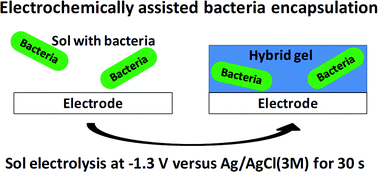This month sees the following Journal of Materials Chemistry A articles that are in the top ten most accessed from April – June:
Electrophoretic fabrication of highly robust, efficient, and benign heterojunction photoelectrocatalysts based on graphene-quantum-dot sensitized TiO2 nanotube arrays
Dengyu Pan, Chen Xi, Zhen Li, Liang Wang, Zhiwen Chen, Bo Lu and Minghong Wu
J. Mater. Chem. A, 2013,1, 3551-3555
DOI: 10.1039/C3TA00059A
Enhancing the efficiency of low bandgap conducting polymer bulk heterojunction solar cells using P3HT as a morphology control agent
Sheng-Yung Chang, Hsueh-Chung Liao, Yu-Tsun Shao, Yu-Ming Sung, Sheng-Hao Hsu, Chun-Chih Ho, Wei-Fang Su and Yang-Fang Chen
J. Mater. Chem. A, 2013,1, 2447-2452
DOI: 10.1039/C2TA00990K
Synthesis of visible light-active CeO2 sheets via mussel-inspired CaCO3 mineralization
Jong Wan Ko, Jae Hong Kim and Chan Beum Park
J. Mater. Chem. A, 2013,1, 241-245
DOI: 10.1039/C2TA00782G
Synthesis and crystal chemistry of the hybrid perovskite (CH3NH3)PbI3 for solid-state sensitised solar cell applications
Tom Baikie, Yanan Fang, Jeannette M. Kadro, Martin Schreyer, Fengxia Wei, Subodh G. Mhaisalkar, Michael Graetzel and Tim J. White
J. Mater. Chem. A, 2013,1, 5628-5641
DOI: 10.1039/C3TA10518K
Solid electrolyte coated high voltage layered–layered lithium-rich composite cathode: Li1.2Mn0.525Ni0.175Co0.1O2
Surendra K. Martha, Jagjit Nanda, Yoongu Kim, Raymond R. Unocic, Sreekanth Pannala and Nancy J. Dudney
J. Mater. Chem. A, 2013,1, 5587-5595
DOI: 10.1039/C3TA10586E
A facilely prepared polypyrrole–reduced graphene oxide composite with a crumpled surface for high performance supercapacitor electrodes
Tao Qian, Chenfei Yu, Shishan Wu and Jian Shen
J. Mater. Chem. A, 2013,1, 6539-6542
DOI: 10.1039/C3TA11146F
Graphene-based mesoporous nanocomposites of spherical shape with a 2-D layered structure
Lee-hwa Song, Sung Nam Lim, Kyoung-Ku Kang and Seung Bin Park
J. Mater. Chem. A, 2013,1, 6719-6722
DOI: 10.1039/C3TA10899F
Transmetalation: routes to metal exchange within metal–organic frameworks
Marianne Lalonde, Wojciech Bury, Olga Karagiaridi, Zachary Brown, Joseph T. Hupp and Omar K. Farha
J. Mater. Chem. A, 2013,1, 5453-5468
DOI: 10.1039/C3TA10784A
Independent control of water retention and acid–base pairing through double-shelled microcapsules to confer membranes with enhanced proton conduction under low humidity
Jingtao Wang, Zizhuo Zhang, Xiujun Yue, Lingli Nie, Guangwei He, Hong Wu and Zhongyi Jiang
J. Mater. Chem. A, 2013,1, 2267-2277
DOI: 10.1039/C2TA00186A
Chemically tailoring the nanostructure of graphene nanosheets to confine sulfur for high-performance lithium-sulfur batteries
Bing Ding, Changzhou Yuan, Laifa Shen, Guiyin Xu, Ping Nie, Qingxue Lai and Xiaogang Zhang
J. Mater. Chem. A, 2013,1, 1096-1101
DOI: 10.1039/C2TA00396A
Why not take a look at the articles today and blog your thoughts and comments below.
Fancy submitting an article to Journal of Materials Chemistry A? Then why not submit to us today!






















